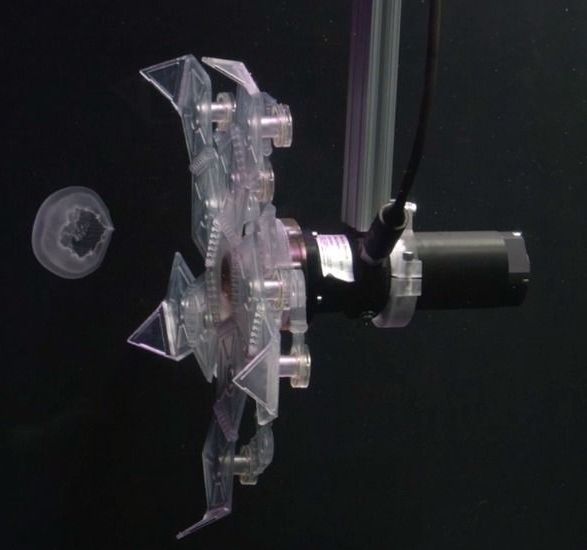3D printing refers to various processes used to manufacture three dimensional objects in successive layers of material formed under computer control.
NASA-awarded ‘marsha’, a 3D-printed vertical Martian habitat by AI spacefactory.
3D printing refers to various processes used to manufacture three dimensional objects in successive layers of material formed under computer control.
NASA-awarded ‘marsha’, a 3D-printed vertical Martian habitat by AI spacefactory.


A fascinating study from scientists at Rockefeller University has shed new light on a deep brain mechanism that can stimulate awareness and cognition. The research homes in on a collection of giant neurons in the brain that seem to be able to modulate stimulation of the entire central nervous system.

The enzyme laccase is able to alter the chemical structure of wood on its surface and thus facilitate biochemical modifications without changing the structure of the material. By attaching functional molecules, Empa researchers develop waterproof or antimicrobial wood surfaces, for instance. Also it is possible to make adhesive wood fibers, which can be pressed to fiberboards without any chemical binding agents. These solvent-free fiberboards are used for insulation of eco houses.
The problem: There are many variants of laccase, which differ in the architecture of the chemically active center, and not all of them react with the desired substrate. As it is extremely difficult to predict whether or not a particular laccase will react with a specific substrate, costly and time-consuming series of experiments are required to identify suitable laccase-substrate pairs. Molecular simulations could solve the problem: You simply need a precise structural analysis of the laccase to simulate the chemical reaction mechanism for every desirable combination on the computer. However, this requires a high computer computing—capacity and, even then, would be extremely time-consuming and expensive.
But there is a shortcut: “deep learning.” A computer program is trained to recognize patterns with data from the literature and own experiments: Which laccase oxidizes which substrate? What might be the best conditions for the desired chemical process to take place? The best thing about it: The search works even if not all details about the chemical mechanism are known.

NASA and partner Bradley University of Peoria, Illinois, have selected the top five teams to share a $100,000 prize in the latest stage of the agency’s 3D-Printed Habitat Centennial Challenge competition. Winning teams successfully created digital representations of the physical and functional characteristics of a house on Mars using specialized software tools. The teams earned prize money based on scores assigned by a panel of subject matter experts from NASA, academia and industry. The judges interviewed and evaluated submissions from 18 teams from all over the world and selected these teams:


For some months now, a 3D printed house in Nantes has drawn lots of attention, not just because a printer was involved but also because it went up from start to finish so quickly (54 hours to print, then add some more time for the windows and roof). Interesting Engineering said it took some more time to add the roof, windows and doors.
A robot printer was used to print layers from the floor upwards to form the walls, and videos show a beautiful result of five rooms with rounded walls.
Now comes the latest news of the world’s first family to move into a 3D-printed home—that is now home for the Ramdani family, consisting of the two parents and their 3 children, to enjoy life in the 4-bedroom house in Nantes, France.

You’re looking at the center of our galactic home, the Milky Way, as imaged by 64 radio telescopes in the South African wilderness.
Scientists released this image today to inaugurate the completed MeerKAT radio telescope. But these scopes form part of an even more ambitious project: the Square Kilometer Array, a joint effort to build the world’s largest telescope, spanning the continents of Africa and Australia.
They would start with a hub that is 78 meters wide.
The National Space Society has the goal of 100-meter wide space station that weighs 8500 tons. It could house 500 people.